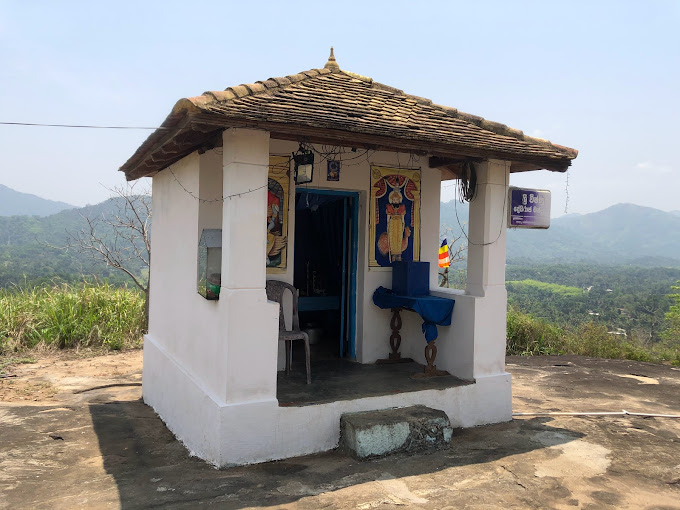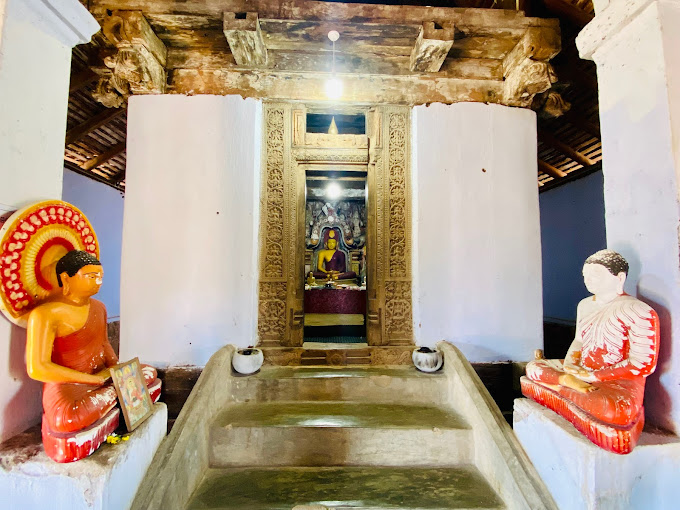- Area: Sri Lanka
- Type: Attractions
- Group: Buddhism Vihara
Devanagala Raja Maha Viharaya is an ancient cave temple in the Mawanella area of the Kegalle District which has been in the news recently. Devanagala Temple is believed to be built during the era of King Parakramabahu the Great (1153-1186) of Polonnaruwa Kingdom. There is also a belief that the temple was first built by King Wattagamini Abaya, better known as King Walagamba (89-77 BC). This temple has housed the Dalada of the Buddha in the past and the ruins of this building still can be seen.
At a later date, King Wimaladharmasuriya (1592 – 1604) of the Kandyan Kingdom also contributed towards the development of this temple.
One of the inscriptions at Devanagala has been made by King Parakramabahu who describes the donation of land in the surrounding area to a commander of his army named Kirthi Nuwaragala (Kith Nuwara Gal), who lead a battalion to Burma on his victorious campaign against the Burmese King. The full translation of this inscription is found in the publication “Lakdiva Sellipi” by Kothmale Amaravansha Thero published by M. D. Gunasena in 1969.
King Wimaladharmasuriya is regarded by some historians as the Kandyan Kingdom’s second founder, responsible for its revival. Born as Konnappu Bandara, he was baptized under the Portuguese name of Don Juoão da Austria. In 1581 , the Portuguese placed Kusmasana Devi who was baptized as Dona Catherina as the rightful owner of the Throne of the Kandy Kingdom. King Rajasinghe I who ruled the Sitawaka kingdom immediately overthrew her and annexed the Kandyan Kingdom to Sitawaka.






Konnapu Bandara was a commander of the Portuguese army but schemed with the Buddhist Priests to free Kandy from the Portuguese. In 1572, he renounced Christianity and embraced Buddhism and was consecrated as king Wimaladharmasuriya of the Kandyan Kingdom. To establish the royal bloodline, he married Kusumasana Devi and fought 2 very successful battles against the Portuguese who attempted to invade the kingdom.
King Wimaladharmasuriya then handed over the Devanagala Raja Maha Viharaya to Devanagala Rathanasara Thero who helped him in his attempt to take the throne of Kandy. A second rock inscription describes this donation to the Devanagala Raja Maha Viharaya by the king.
The Devanagala was declared as a protected archeological reserve in 1941 based on the land measurements done in 1876 which had 72 acres of land belonging to the temple.
By the late 1900’s the temple had gone into ruins Muslims had started to invade the land belonging to the temple. Today the rock of Devanagala stands surrounded by a Muslim Colony with all the land belonging to the temple grabbed by them. Unfortunately, they have also destroyed all the ruins and tried to erase all the archeological importance of the site. One of the inscriptions in Devanagari has been attempted to destroy by pouring highly concentrated acid. The rock carving of a Buddha’s footprint has been scrapped and disfigured. All the statues and stupas belonging to the Kandyan era have been destroyed looking for treasures.
A recent (around 2012-2014) revival of the heritage of Devanagala has now become a national issue with the Muslim Community refusing to leave the land belonging to the temple. The government attempted to re-measure the land surrounding the area in 2005 and more recently in 2013. Although there was no objection from the affected Sinhalese community, the Muslim Community vehemently objected to this exercise, and the officials were not allowed to complete this task both times.

